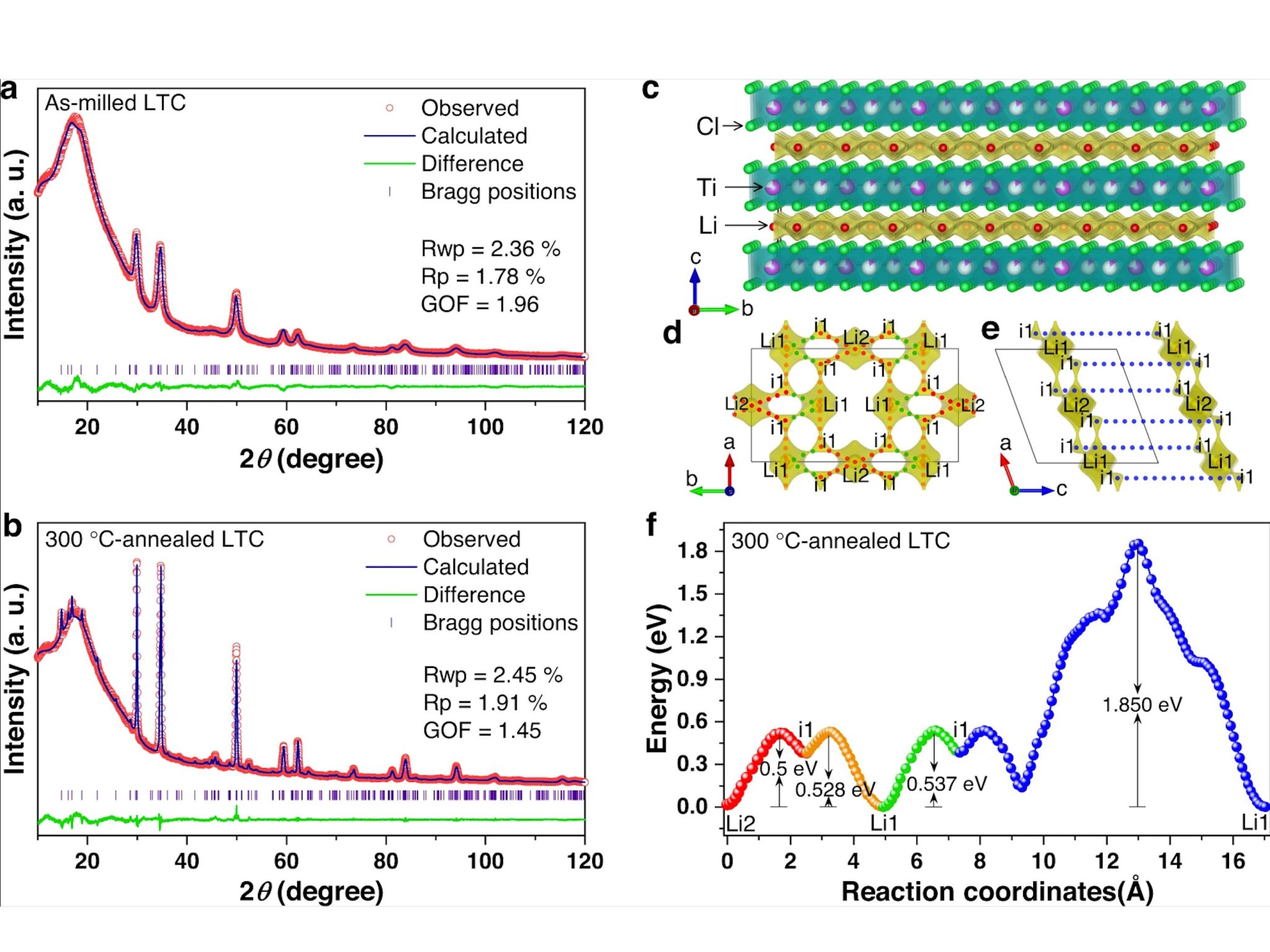
A team of researchers led by Prof. MA Cheng from the University of Science and Technology of China (USTC) has proposed a new technical route for all-solid-state lithium-based batteries (ASSLBs) that could unlock their full potential. Their findings have been published in the journal Nature Communications under the title “Li3TiCl6 as ionic conductive and compressible positive electrode material for ASSLBs”.
Battery technology plays a critical role in powering new energy vehicles, and ASSLBs are emerging as the next focus of battery research. These batteries are safer and more energy-dense than conventional lithium-ion batteries. However, using chloride as a cathode in commercial lithium-ion batteries has been challenging because it is easily soluble in liquid electrolytes. To overcome this limitation, the research team developed a new type of cathode material for ASSLBs using lithium titanium chloride.
Lithium titanium chloride is highly compressible and can achieve a relative density of more than 86.1% after cold pressing. Its room temperature ionic conductivity is as high as 1.04 mS cm–1, which is much higher than that of oxide cathode materials. By replacing oxides with chlorides, the team was able to significantly increase the active substance loading in the cathode, resulting in a mass ratio of 95% active material.
The researchers found that their complex cathode based on lithium titanium chloride could achieve a stable cycle of up to 2,500 turns at room temperature with a charge/discharge rate of 1 hour, and a 95% active matter mass ratio. This performance exceeds that of oxide cathodes, which require a significant percentage of solid electrolyte to achieve efficient ion transport. In addition, the mass ratio of active material in their complex cathodes is typically only 70–80%, much lower than the 95% achieved by lithium titanium chloride.
Overall, the research demonstrated the outstanding performance of lithium titanium chloride as a promising route for ASSLBs, which could unleash the full potential of these batteries.


